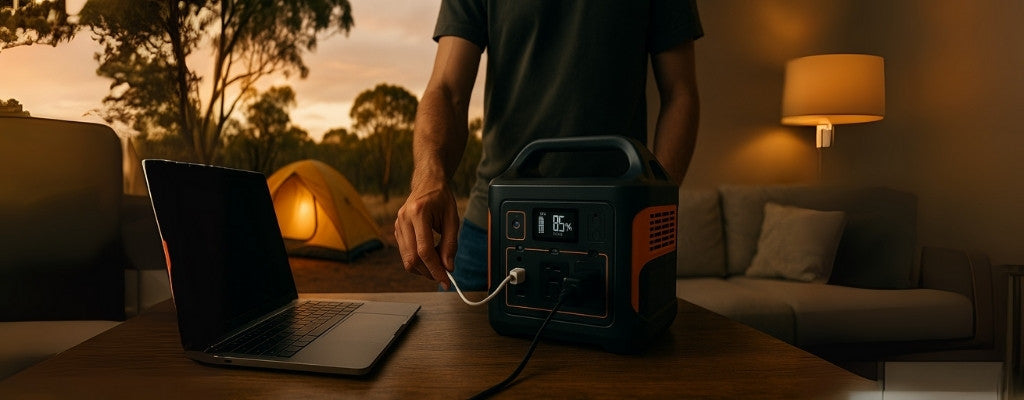
What is a Portable Power Station Used For?
Simply charge it up, plug in your devices, and avoid overloading it—those are the basics. Whether you're camping off-grid, powering tools on-site, or keeping your essentials running during a blackout, this guide simplifies how to use a portable power station safely and effectively. We'll walk you through everything from first-time setup to what you can realistically power with one.
Not sure which power station is right for you?
Take the quiz!
How to Set Up and Use a Portable Power Station
Initial Charging and Setup
If it's your first time using one, plug it in and fully charge it before anything else. Most units come with a standard wall charger. A full charge conditions the battery and gets the unit ready for use. While you wait, take a few minutes to glance through the manual to begin understanding portable power stations—especially the display, ports, and power modes.
How to Turn On a Portable Power Station?
Turning one on is usually as simple as holding the main power button for 2–3 seconds. Many models also require you to activate specific sections (AC, DC, USB) using separate switches or buttons. Once on, the screen or lights will indicate current charge and output status. Simple, but essential to learn before hitting the road.
Understanding the Display and Indicators
Your power station will have a digital screen or LED indicators that show charge level, wattage in/out, and remaining runtime. Watch these closely when running multiple devices—they help you avoid overloading the system.

What a Portable Power Station Is Used For
Practical Uses for Portable Power Station Setups
Portable power stations are incredibly versatile and can be used across a range of settings. From camping to emergencies, they serve as reliable backup power without the hassle of fuel or noise. Whether you’re charging devices, running appliances, or supporting tools, these units are purpose-built for portable energy on demand.
What Can You Run on a Portable Power Station?
Most stations support multiple ports—AC outlets for appliances like laptops or small fridges, USB ports for phones and tablets, and DC ports for car fridges or air compressors. Check the wattage requirements of your gear and make sure you're not exceeding the station's rated output. For gear with motors (like fridges), factor in the startup surge too.
Matching Your Gear to Output Limits
Add up the wattage of everything you plan to connect. If your station has a 500W output limit, don’t run a 600W coffee machine on it. Overloading will cause auto shut-off—and potentially shorten your battery's life over time. Use quality cables and avoid cheap adapters.

Portable Power Station Safety and Maintenance Tips
Operating Your Portable Power Station Safely
Ventilation and Heat Management
Don’t tuck your station into a cramped corner. Use it in well-ventilated areas away from direct sun or extreme heat. Like any electronics, heat is the enemy of battery health.
Stick to Essentials
Power stations are designed for convenience, not running everything at once. Focus on essentials and use one high-drain device at a time when possible. Avoid stacking plug adapters or overloading ports.
Storage and Maintenance
Charge it to full every few months to keep the battery healthy. Wipe ports clean, store in cool dry areas, and avoid water or dust exposure. If your station has an app, use it to check battery status or update firmware periodically.


